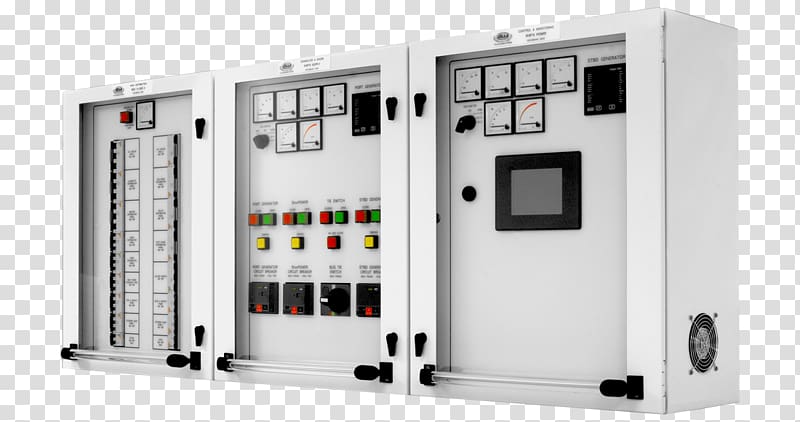views

Have you ever opened an electrical panel and found it confusing to understand what each switch or circuit does? Whether you’re a homeowner, technician, or someone responsible for maintaining a building, knowing how to read the labels and circuits in an electrical DB panel is not only useful—it’s essential for safety, troubleshooting, and proper power management. A Distribution Board (DB) panel is the heart of any electrical system. Understanding how it works helps you avoid electrical hazards and makes maintenance easier.
Start with understanding the layout of the panel
Most DB panels have a standard layout. a main switch on top, Below that are several miniature circuit breakers (MCBs) lined up in rows.Every MCB manages the flow of electricity to a particular section of the building or a dedicated appliance. Some panels may also include residual current devices (RCDs) or earth leakage circuit breakers (ELCBs) for additional safety. Knowing where these components are located gives you a better starting point when identifying circuits.
Know what the main switch does
It’s important to know where this switch is located because in emergencies, it allows you to cut off power quickly. Always make sure the main switch is clearly labeled and easily accessible. If it’s not, consider updating the label or adding a protective cover that doesn’t block visibility.
Read the labels on each breaker
For example, you might see labels like “Lights - Living Room,” “AC Unit - Bedroom 1,” or “Water Heater.” These labels help you identify which breaker corresponds to each area or appliance. If the labels are missing, faded, or unclear, this can lead to confusion and even dangerous situations. To improve safety, always relabel unclear circuits using waterproof, legible stickers or printed tags.
Understand the numbering system
In many panels, breakers are numbered for easy reference. The numbers may run from left to right or top to bottom, depending on the panel design. These numbers can match up with a legend or schedule pasted inside the panel door. This makes it easier to find the correct breaker when troubleshooting or performing maintenance. Make sure the numbering is consistent and update the legend whenever changes are made to the circuits.
Identify the type of breaker used
Different breakers serve different purposes. A standard MCB trips when there’s an overload or short circuit. An RCD or ELCB trips when it detects leakage current, protecting against electric shocks. Knowing the function of each type helps you understand what kind of protection each circuit has. For added safety, ensure that critical areas like bathrooms or kitchens have RCD protection, especially where water exposure is possible.
Match circuits with room or appliance usage
One of the most helpful steps in reading a DB panel is matching each circuit with the area or appliance it powers. This can be done by turning off one breaker at a time and checking what stops working. Though this may take some time, it’s a practical way to ensure every circuit is correctly identified. Create a simple chart or diagram and keep it taped inside the DB panel door for quick reference. This helps during emergencies or when electricians need to carry out repairs.
Watch out for double-tapped breakers
Sometimes, you might find two wires connected to a single breaker, known as a double tap. This is not ideal and can be unsafe unless the breaker is specifically designed to handle it. If you notice this, it’s best to call a qualified electrician to either split the circuits or install additional breakers.
Look for overloaded circuits
If a single breaker is labeled to power too many things—like lighting, sockets, and heavy appliances—it might be overloaded. A well-organized DB panel spreads the electrical load across multiple breakers to reduce stress on each one. If you suspect overloading, consult an expert to reorganize the circuits or install sub-panels if necessary.
Check the condition of labels and breakers
Over time, labels can peel off and breakers can wear out. If you find any burnt marks, rust, or broken switches, take action immediately. Replacing damaged parts and renewing old labels not only keeps your system safe but also helps others who may need to access the panel.
Keep the DB panel clean and covered
Dust, moisture, and pests can damage the internal components of a DB panel. Always keep the panel door closed and ensure it has a proper cover. Avoid using the panel area for storage or hanging items on it. A clean and organized DB panel is easier to read, safer to operate, and lasts longer.
Conclusion
Learning how to read labels and circuits in an electrical DB panel is a simple but important skill. It helps you understand your power distribution, stay safe during electrical work, and react quickly in emergencies. With clearly labeled breakers, a clean layout, and regular maintenance, your DB panel becomes not just a box of switches, but a reliable and safe control hub for your building’s power system. If you’re ever unsure, don’t hesitate to consult a licensed electrician for help in reviewing or reorganizing your DB panel.










